IFi Audio xDSD Bruksanvisning
Les nedenfor 📖 manual på norsk for IFi Audio xDSD (1 sider) i kategorien Ikke kategorisert. Denne guiden var nyttig for 25 personer og ble vurdert med 4.5 stjerner i gjennomsnitt av 13 brukere
Side 1/1

5V
LI STE NMEA SU RE
FILTER
1. ON/OFF, Analogue Volume Rotary with LED
Power ON (with mode selection)
Press and hold the rotary knob until LEDs light up. The LEDs
(rotary knob, kHz & INPUT) on the front faceplate will light-up
corresponding to the last mode used. Either release for the last
mode or hold the rotary knob to cycle through the two modes.
Release to accept that mode.
LED Mode
Green Wired (USB or S/PDIF)
Blue Wireless (Bluetooth)
The xDSD allows you to cycle through the selections twice
(approx. 20 seconds) before powering off.
Power OFF
Push and HOLD the rotary knob for several seconds until all the
LEDs change to White then release to power off.
Wired/Wireless mode switching
The xDSD must be switched off to allow mode selection after
powering on. See Power ON (with mode selection).
Mute
Press the rotary knob to mute. To unmute press it again OR turn
the rotary to unmute.
Rotary knob/Volume:
LED Volume
Red -9 to 0 dB (100%-91%)
Yellow -27 to -10 dB (90%-73%)
Green -45 to -28 dB (72%-55%)
Cyan -63 to -46 dB (54%-37%)
Magenta -81 to -64 dB (36%-19%)
Blue -101 to -82 dB (18%-0%)
Off Mute
White Line Output mode (2V)
Note: The xDSD uses ONLY a pure analogue volume control.
Note: With no signal xDSD will go into the mute mode and the volume LED will be
off.
Ver1.7
2. INPUT LED
LED INPUT
White USB
Green S/PDIF
Blue Wireless Bluetooth (Connected)
Blue (flashing) Wireless Bluetooth (Awaiting
connection)
Blue/Red (flashing) Wireless Bluetooth (Pairing)
3. Mode Selection
Based on the music source and your preference, choose between
the Headphone and Line Output modes.
S-Balanced headphone 3.5mm/Line Output Headphone Mode
This is a dual-mono headphone amplifier section with S-Balanced
3.5mm TRRS/TRS connection. This special headphone circuit is of
most benefit to 'Balanced' headphones, but also elevates the
performance of 'non-balanced' headphones.
Wired Mode (USB or S/PDIF)
This mode allows you to connect the xDSD with a DAP, phone,
laptop or any other device via a Lightning to USB Camera
Adapter (Apple) or USB On-The-Go (OTG) cable (Android).
When the xDSD is off, hold the rotary knob (1) until it turns green
and then release.
The selection between USB and S/PDiF is automatic. The USB
singal has priority over S/PDiF. To enter S/PDiF mode, please
make sure there is no signal going through the USB input.
Wireless Mode (Bluetooth)
This mode allows you to connect the xDSD to a DAP, phone or any
other music source with Bluetooth wirelessly.
When the xDSD is off, hold the rotary knob (1) until it turns blue
and then release. The xDSD will 'blink' blue for 15 seconds whilist
searching for devices to pair with. Already paired devices will
connect automatically. New devices will enter pairing mode with
the rotary knob blinking (1) Blue/Red. The xDSD is able to store up
to 8 paired Bluetooth devices otherwise hold the settings button
(6) to force pair.
Line Output Mode
The 3.5mm jack can also be used as a fixed-level line out with all
the headphone specific sonic controls disabled and the volume
control bypassed.
Warning: In Line Output mode, do NOT have headphones inserted as damage to
product/hearing may ensue.
Enabling Line-Output
When the unit is OFF, HOLD the ‘Settings’ button ( ) THEN
press the rotary to switch ON. Once the xDSD powers up, release
the rotary whilst still holding the ‘Settings’ button ( ) for 3
seconds. Once released, the rotary LED should indicate White.
Disabling Line-Output
Turn the unit off and HOLD the ‘Settings’ button ( ) THEN
press the rotary to switch ON. Once the xDSD has powered-up,
keep the rotary pushed in to cycle as per normal through the two
modes and release to select the desired mode. The Line-Output
mode deactivation will be disabled by the rotary being blank
(i.e., not lit White).
8. S/PDIF Input
The USB singal has priority over S/PDiF. To enter S/PDiF mode,
please make sure there is no signal going through the USB input
.
9. USB Input Type A
To connect with the xDSD you can use a Lightning to USB Camera
Adapter (Apple) or USB On-The-Go (OTG) cable (Android).
Ordinary 'çharging' cables cannot be used.
For connection to a computer, use the enclosed USB3.0 cable for a
superior connection (over USB2.0).
10 Digital Filter.
Different digital filters are available for PCM & DSD. For listening
enjoyment, we recommend the transient optimized minimum-
phase 'Listen' filter but feel free to choose the frequency response
optimised ‘Measure' filter.
Specifications
USB Input: up to PCM768kHz & DSD512
(24.6/22.6MHz)
S/PDIF Coaxial
and Optical Inputs: up to 192kHz/24Bit
Dynamic Range: > 113dB (A)
Volume Control: -101dB...0dB in 1dB steps
Output power: > 2.82V/500 mW @ 16 Ohm
> 3.7V/270mW @ 50 Ohm
> 3.8V/48 mW @ 300 Ohm
> 3.8V/24 mW @ 600 Ohm
.
Line out Level: > 2.1V @ 0dBFS (& 0dB Volume)
THD &N (1V/16R): < 0.005%
Output Impedance: < 1
Battery: 3.8V/2200mAh
Dimensions: 95 (l) x66.5 (w) x19 (h) mm
0
Weight: 127g (0.28 Ibs)
Warranty period: 12 months
Specications are subject to change without notice.
4. 3D+® Matrix LED
3D+® Matrix (on/off) recreates a holographic sound field like listening
to a pair of speakers. It is a pure analogue signal processing circuit.
5. XBass+® LED
Many headphones lack the correct bass response. XBass+® is an
analogue circuit designed to 'add back' the lost bass response for
a more accurate reproduction of the original music.
6 Settings .
This button cycles between:
Off
3D+®
XBass+®
XBass+® & 3D+®
Pairing (Bluetooth, Hold)
7. Audio Format LED (kHz)
The LED colour scheme indicates the audio format and sampling
frequency received by the xDSD from the music source.
LED Mode
Green PCM 44/48/88/96kHz
Yellow PCM 176/192/384kHz
White PCM 768kHz
Cyan DSD64/DSD128
Blue DSD256
Red DSD512
Magenta MQA
Off No valid Signal
x series
11. Type-C USB charging port
The USB-C type port is or charging ONLY.
Please only use a USB-A to USB-C cable to recharge the xDSD (as
a USB-C to USB-C setup will not be detected).
When the xDSD is off and a 5V USB power supply is detected,
the LED will change colour to show the various states of charge
(see next section).
We advise to charge the xDSD switched off.
You can listen to music while charging, but it may take longer to
be fully-charged, depending on the volume level and the
headphones used.
The xDSD may be slightly warm to touch when it is simultaneously
in use and being charged.
12. LED for Battery Status
LED Status
White* > 75%
Green* 25%>
Red* 10%>
Red (flashing) 10% ≤
*Battery LED will flash when it is charging
With IEMs, a fully-charged battery offers approx 6-8 hours of
music enjoyment.
It is pre-installed with firmware v5.30 which has been optimised
for MQA. This version also handles up to PCM384/DSD256.
For firmware optimised to run PCM768/DSD5 12(non-MQA)
please install firmware v5.20.
For all downloads: www. ifi-audio com
Produkspesifikasjoner
| Merke: | IFi Audio |
| Kategori: | Ikke kategorisert |
| Modell: | xDSD |
Trenger du hjelp?
Hvis du trenger hjelp med IFi Audio xDSD still et spørsmål nedenfor, og andre brukere vil svare deg
Ikke kategorisert IFi Audio Manualer
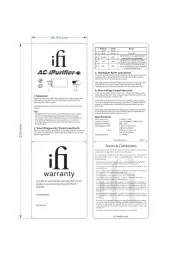
13 Oktober 2025
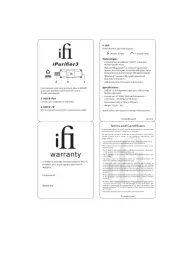
12 Oktober 2025

12 Oktober 2025

12 Oktober 2025

6 Oktober 2025
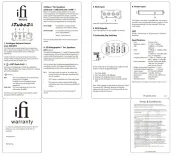
6 Oktober 2025
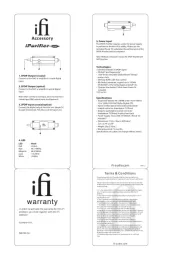
6 Oktober 2025

17 Februar 2025

14 Januar 2025

14 Desember 2024
Ikke kategorisert Manualer
- Silver Cross
- HK Audio
- Yellow Garden Line
- EXO
- Bome
- Storcube
- KDK
- Powr-Flite
- Teufel
- Kenwood
- Mountfield
- Heritage Audio
- Audiolab
- Clatronic
- Micro Matic
Nyeste Ikke kategorisert Manualer

23 Oktober 2025
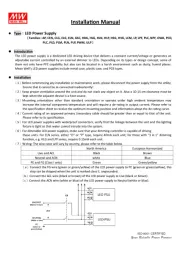
23 Oktober 2025

23 Oktober 2025
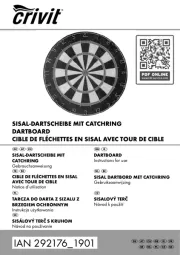
23 Oktober 2025
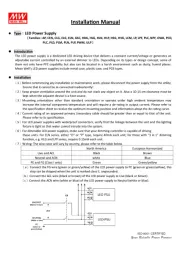
23 Oktober 2025

23 Oktober 2025
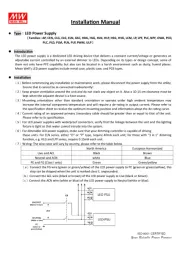
23 Oktober 2025

23 Oktober 2025
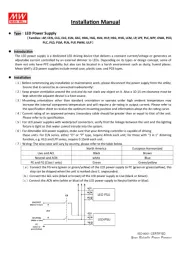
23 Oktober 2025

23 Oktober 2025